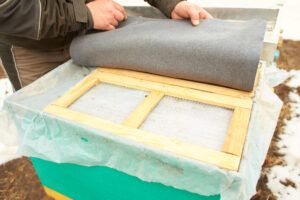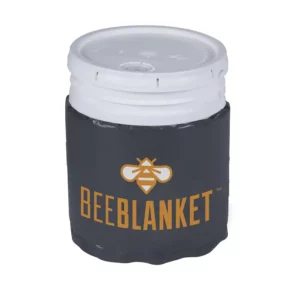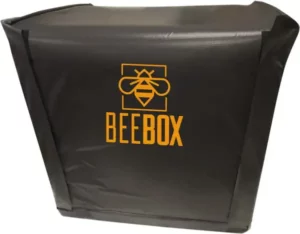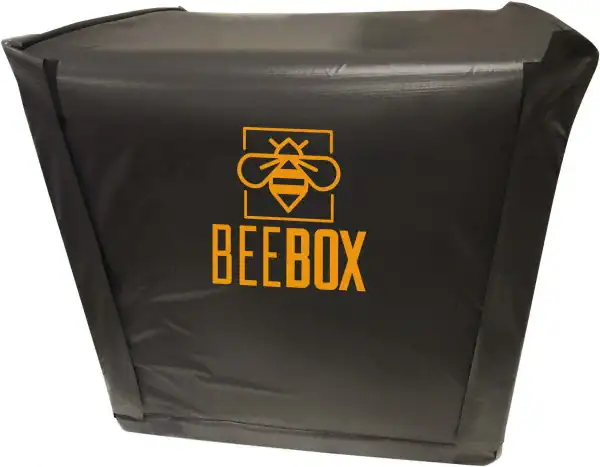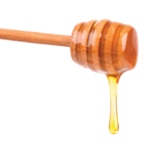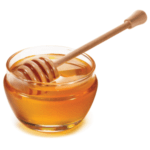How Much Honey do Your Bees Need for Winter?
As the cold weather sets in, ensuring that your honey bee colony has enough food to survive the winter is essential. Feeding bees in winter is crucial because honey bees cannot forage when snow is on the ground or when temperatures are too low. In this article, we’ll discuss how to feed bees in the winter and keep them warm with bee blankets.
How much sore beet honey do I need during the cold months? There are many things to consider in determining how much honey needs to be stored in a single place. Remember that variables exist too. Weather conditions vary in most parts of the country in different years.
Key Factors to Consider When Feeding Bees in Winter
Feeding bees in the winter can be done in several ways, but the most common methods are sugar syrup, granulated sugar, pollen patties, sugar cakes, and even the bees’ own honey. When using sugar syrup, mix two parts granulated sugar with one part water and heat it until the sugar dissolves. Once the mixture cools, pour it into a feeder and place it inside the hive. You can also feed bees sugar by making sugar cakes. Mix granulated sugar with enough water to make a paste, then press it into a cake shape and place it on top of the frames. Another option is to feed bees honey by placing frames of their honey in the hive for them to consume.
Why winter feeding is crucial for honey bee colonies
- Honey bees cannot forage when there is snow on the ground or when temperatures are too low.
- Bees require a large amount of food to survive the winter months.
- Lack of adequate food can lead to starvation, disease, and colony collapse.
When feeding bees in winter, it is important to know how much honey they have stored. Honey bee colonies require approximately 30-60 pounds of stored honey to survive the winter. If the colony does not have enough stored honey, it will require supplemental feeding. In this case, liquid feed or sugar cakes can be used. It is also important to ensure that the bees have enough pollen patties for protein to survive the winter.
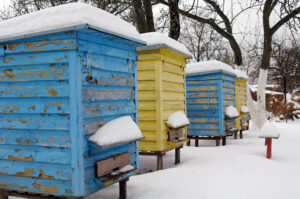
How to feed bees in the winter
- Sugar syrup: mix two parts granulated sugar with one part water and heat until the sugar dissolves. Once cooled, pour into a feeder and place inside the hive.
- Granulated sugar: mix granulated sugar with enough water to make a paste, then press it into a cake shape and place it on top of the frames.
- Pollen patties: provide supplemental protein to bees during the winter.
- Sugar cakes: mix granulated sugar with enough water to make a paste, then pour into a mold and let harden.
- Feed bees honey: place frames of their own honey in the hive for them to consume.
How much honey is needed for a honey bee colony to survive winter
- Honey bee colonies require approximately 30-60 pounds of stored honey to survive the winter.
- It is essential to monitor honey stores regularly and provide supplemental feeding if necessary.
However, determining the exact amount of honey your bees need can be challenging. Several factors must be considered, including the size of the colony, the weather conditions, and the amount of brood in the hive. You might also want to know how to better soften honey to help them feed more easily.
Size of the Colony
The size of the colony plays a significant role in how much honey is required for winter survival. Larger colonies with more bees require more honey than smaller colonies. A typical beehive can contain anywhere from 10,000 to 80,000 bees, depending on the time of year and the region’s climate. The larger the colony, the more honey it needs to survive the winter months.
Weather Conditions
Weather conditions play a crucial role in how much honey bees need to store for winter. In regions with colder climates, honey bees must store more honey to survive. Bees also consume more honey during prolonged periods of cold weather. Therefore, the number of honey bees need to survive the winter may vary from year to year, depending on the weather conditions.
Amount of Brood in the Hive
The amount of brood in the hive can also affect how much honey bees need to store for winter. Brood refers to the eggs, larvae, and pupae in the hive. During the winter months, bees consume honey to keep the brood warm. Therefore, if there is a lot of brood in the hive, the bees will consume more honey to keep them warm, and the colony will require more honey for winter survival.
How to Estimate the Amount of Honey Needed for Winter Survival
Estimating the amount of honey needed for winter survival can be challenging. One way to estimate how much honey your bees need is to weigh the hive. If the hive weighs between 80-100 pounds, it likely has enough honey to survive the winter. However, this method may not be accurate as the weight of the hive can vary depending on the type of hive, the amount of brood in the hive, and the weather conditions.
Another way to estimate how much honey bees need is to observe the hive’s honey stores. Bees store honey in the frames of the hive. If you observe that there are at least three frames of honey stored, the colony likely has enough honey to survive the winter. However, this method may not be accurate either, as honey frames can vary in size and weight.
Therefore, the best way to estimate how much honey bees need for winter survival is to monitor the hive’s food stores regularly. A colony should have at least 30 pounds of honey stored in the fall. Supplemental feeding may be necessary if the colony consumes more honey than it is producing. Providing liquid feed or sugar cakes can help ensure the colony has enough food to survive the winter months.
Keeping bees warm with bee blankets
To keep bees warm in the winter, beekeepers can use bee blankets. Bee blankets are made of insulating and heated material and are placed over the hive to help trap the bees’ heat. This is important because bees form a winter cluster, which means they huddle together to maintain warmth. Without proper insulation, the bees may not survive the cold temperatures.
You can also keep bees warm with bulk material warmers that may allow you to warm multiple hives more at a time.
- Bee blankets are made of insulating material and are placed over the hive to help trap the bees’ heat.
- Bee blankets can also be placed around buckets of honey to control viscosity before giving the honey to the bees.
- Without proper insulation, the bees may not survive the cold temperatures.
- Bee blankets can increase the chances of the colony surviving the winter as they not only insulate but also can add heat to better control the temperature.
- Bulk material warmers can heat multiple hives at a time.
Other Tips for Winter Beekeeping
Winter beekeeping requires extra attention and care to ensure the survival of honey bee colonies. And there is quite a history of beekeeping. Feeding bees in the winter, monitoring honey stores, and using bee blankets to keep the bees warm are crucial steps in preparing for the colder months. However, beekeepers should also follow other tips to ensure their bees’ health and safety. In this section, we’ll discuss four additional tips for winter beekeeping, including how to ensure the hive is free of drafts and leaks, monitor food stores, keep the hive entrance clear, and check the hive periodically for the bees’ health.
- Ensure the hive is free of drafts and leaks.
- Monitor the colony’s food stores and add supplemental food if necessary.
- Keep the hive entrance clear of snow and debris.
- Check the hive periodically to ensure the bees are healthy and alive.
In conclusion, feeding bees in winter is critical to their survival. Whether you feed bees sugar syrup, granulated sugar, pollen patties, sugar cakes, or honey, the most important thing is ensuring they have enough food. Additionally, using bee blankets can help keep the bees warm and increase their chances of winter survival. As beekeepers, we are responsible for caring for our bees in the winter and ensuring they have everything they need to thrive.
The Powerblanket Bee Blanket will maintain the same temperature as a hive, ensuring your honey is always at the perfect temperature.


